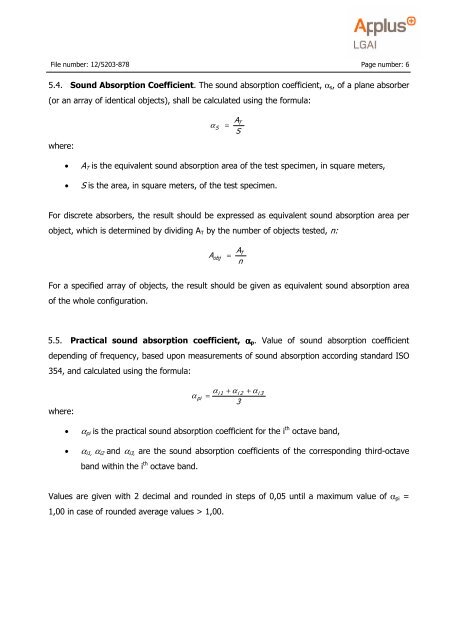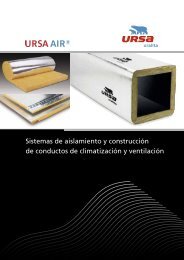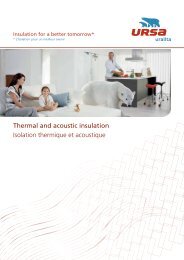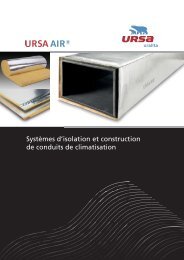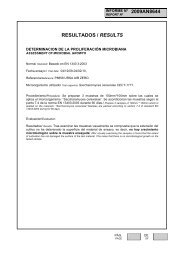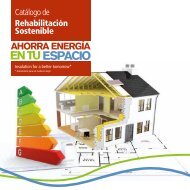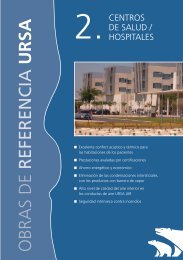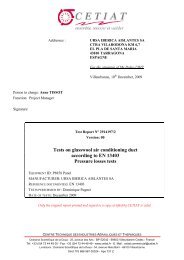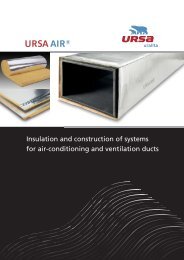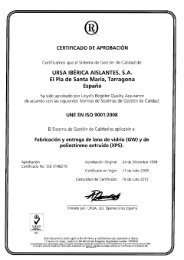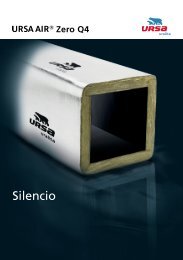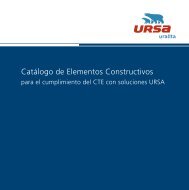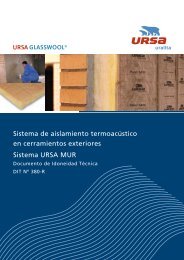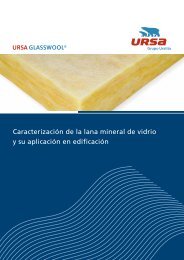TEST REPORT - Ursa
TEST REPORT - Ursa
TEST REPORT - Ursa
Create successful ePaper yourself
Turn your PDF publications into a flip-book with our unique Google optimized e-Paper software.
File number: 12/5203-878 Page number: 65.4. Sound Absorption Coefficient. The sound absorption coefficient, α s , of a plane absorber(or an array of identical objects), shall be calculated using the formula:where:α S =A TS• A T is the equivalent sound absorption area of the test specimen, in square meters,• S is the area, in square meters, of the test specimen.For discrete absorbers, the result should be expressed as equivalent sound absorption area perobject, which is determined by dividing A T by the number of objects tested, n:Aobj =ATnFor a specified array of objects, the result should be given as equivalent sound absorption areaof the whole configuration.5.5. Practical sound absorption coefficient, α p . Value of sound absorption coefficientdepending of frequency, based upon measurements of sound absorption according standard ISO354, and calculated using the formula:where:αpiα=i 1+ αi 23+ αi 3• α pi is the practical sound absorption coefficient for the i th octave band,• α i1, α i2 and α i3, are the sound absorption coefficients of the corresponding third-octaveband within the i th octave band.Values are given with 2 decimal and rounded in steps of 0,05 until a maximum value of α pi =1,00 in case of rounded average values > 1,00.


